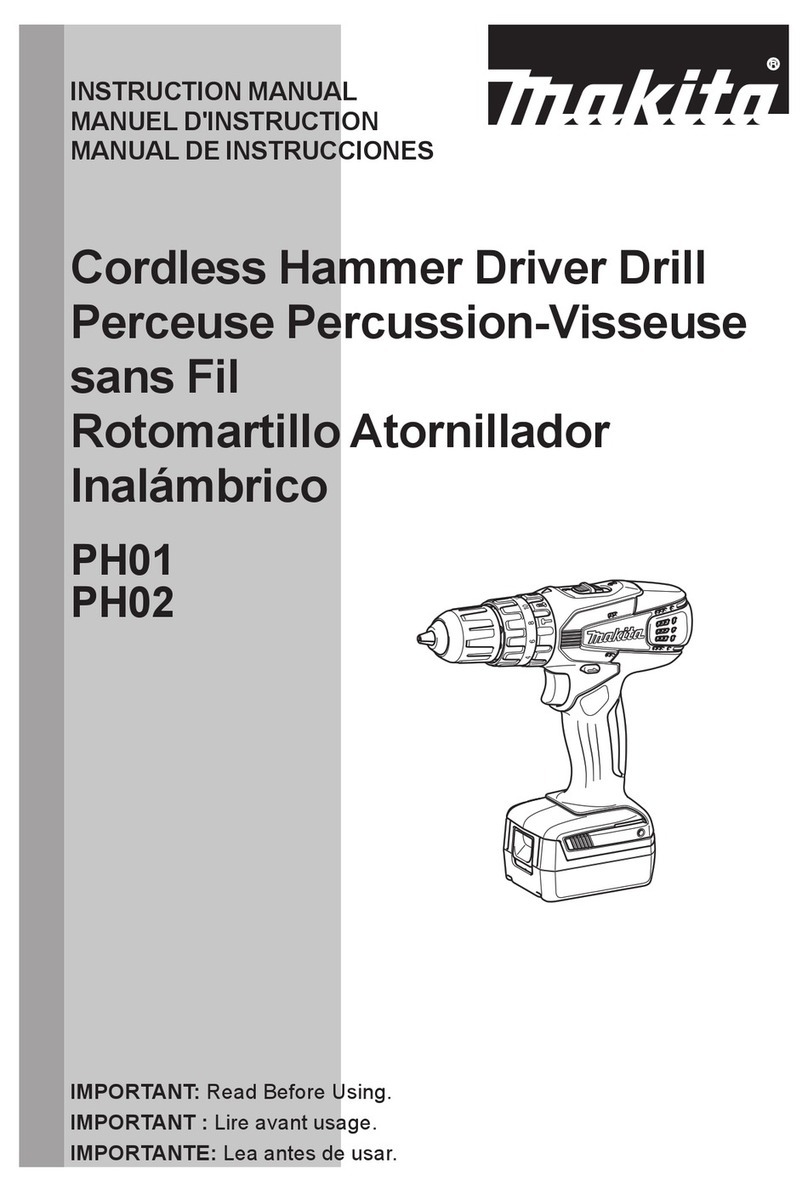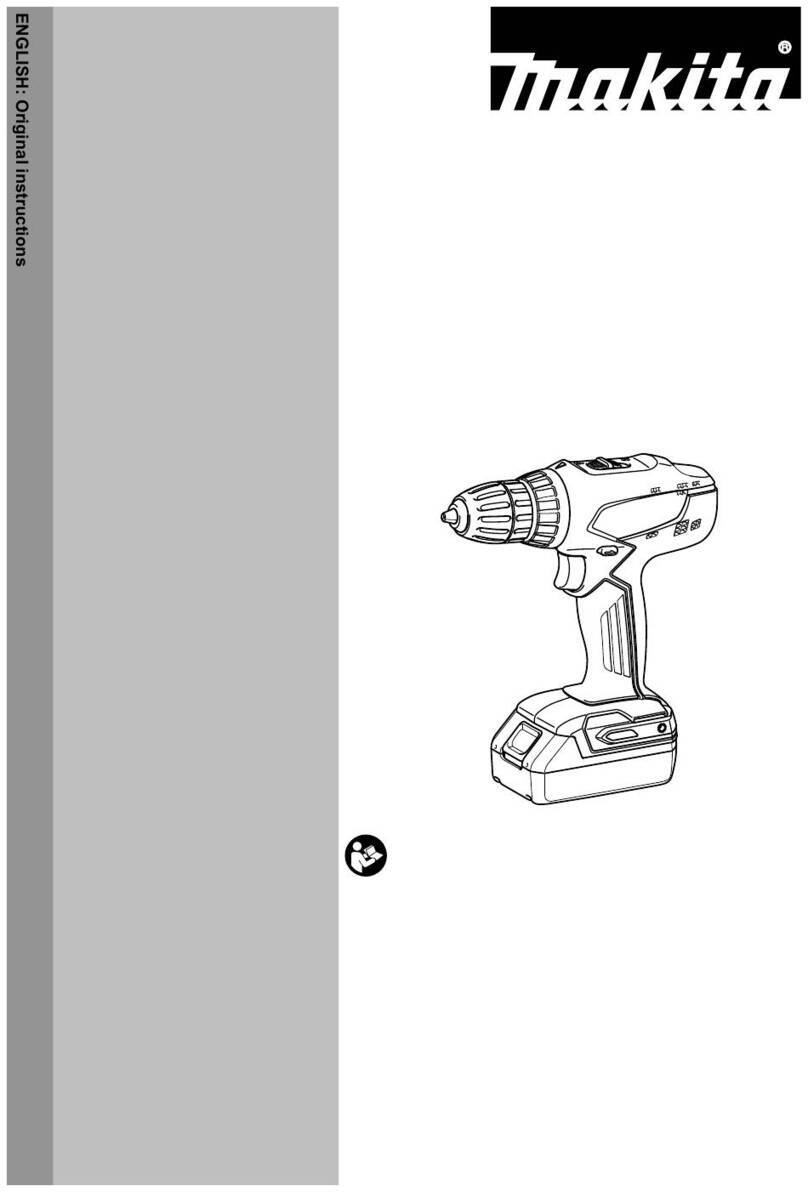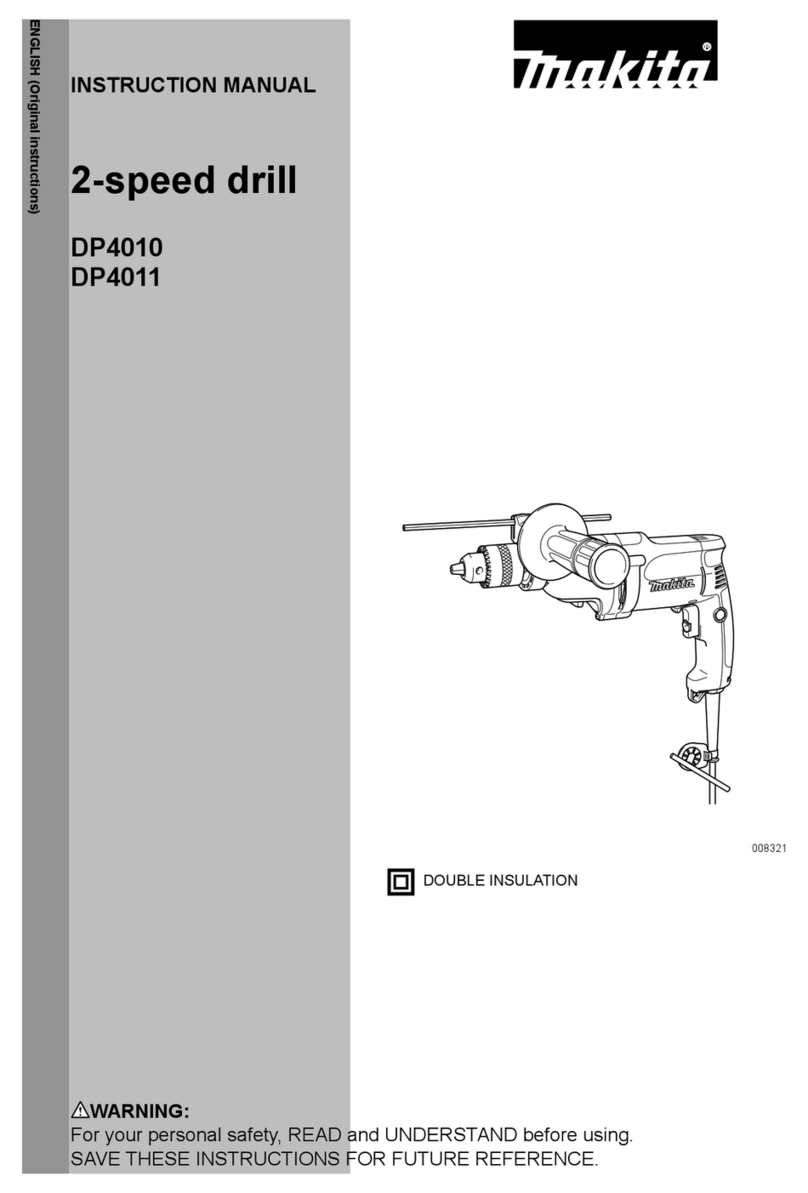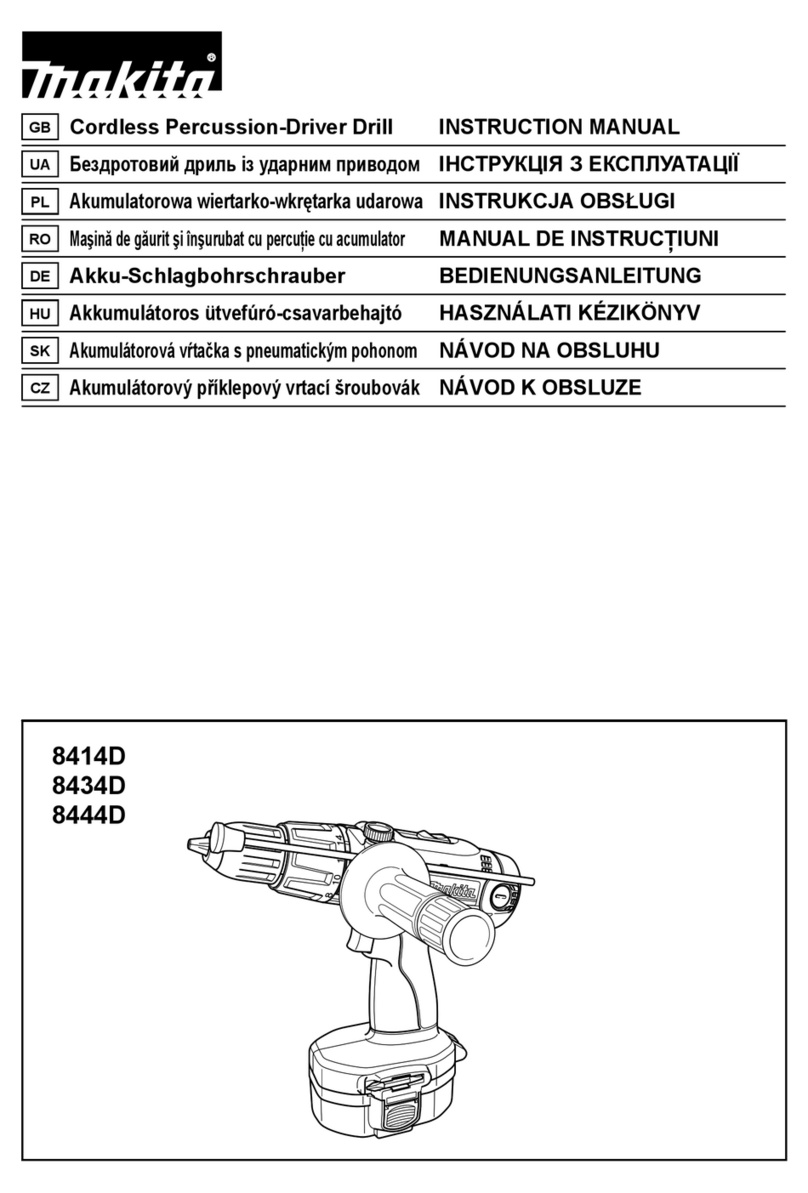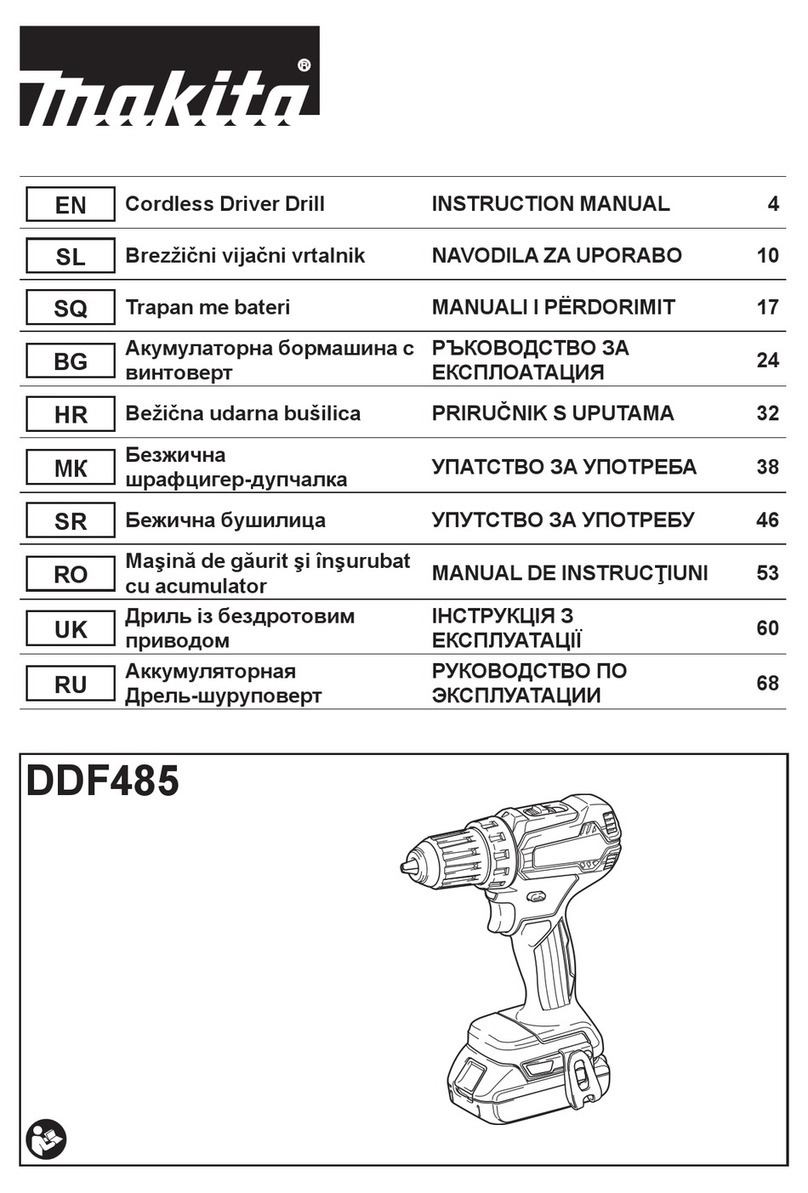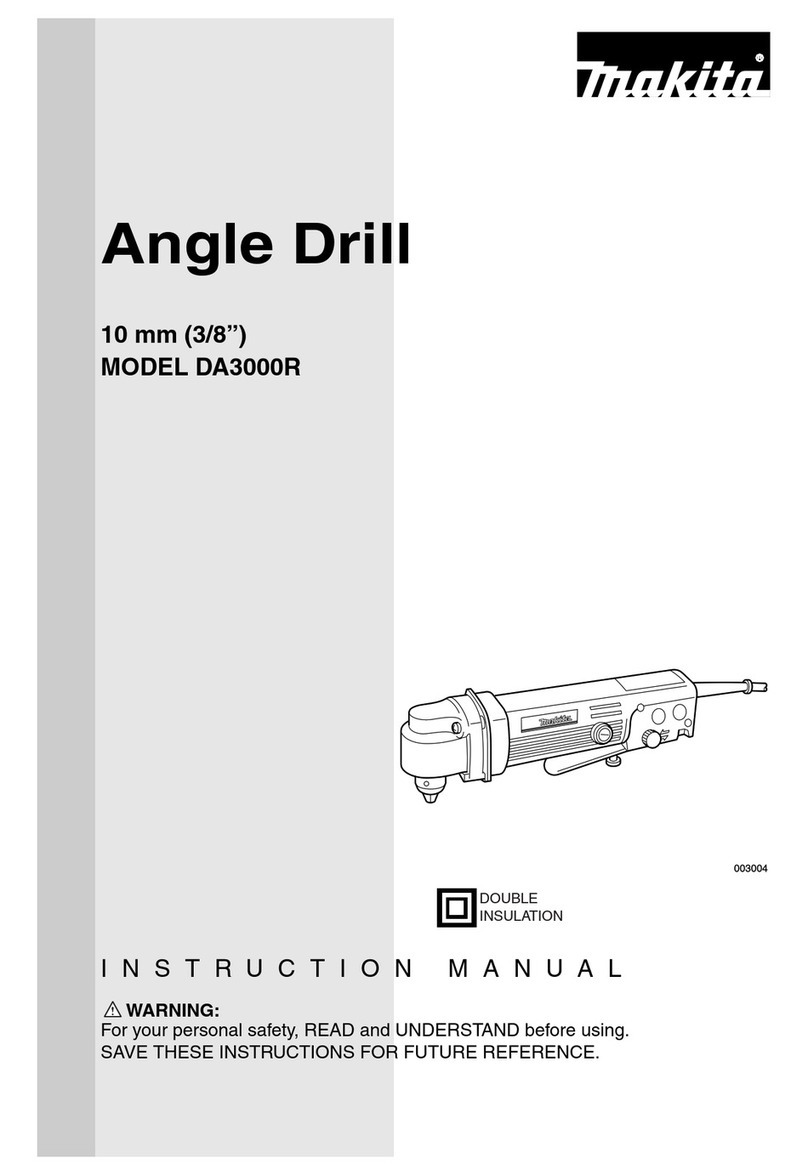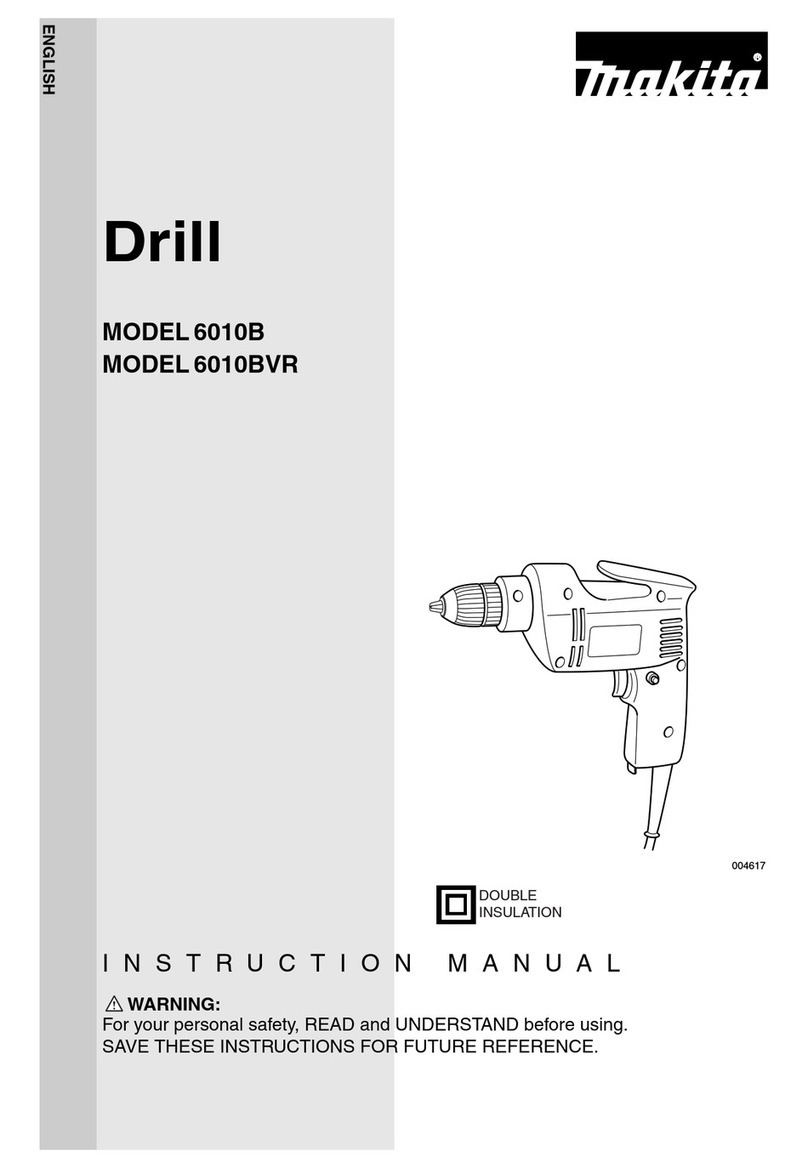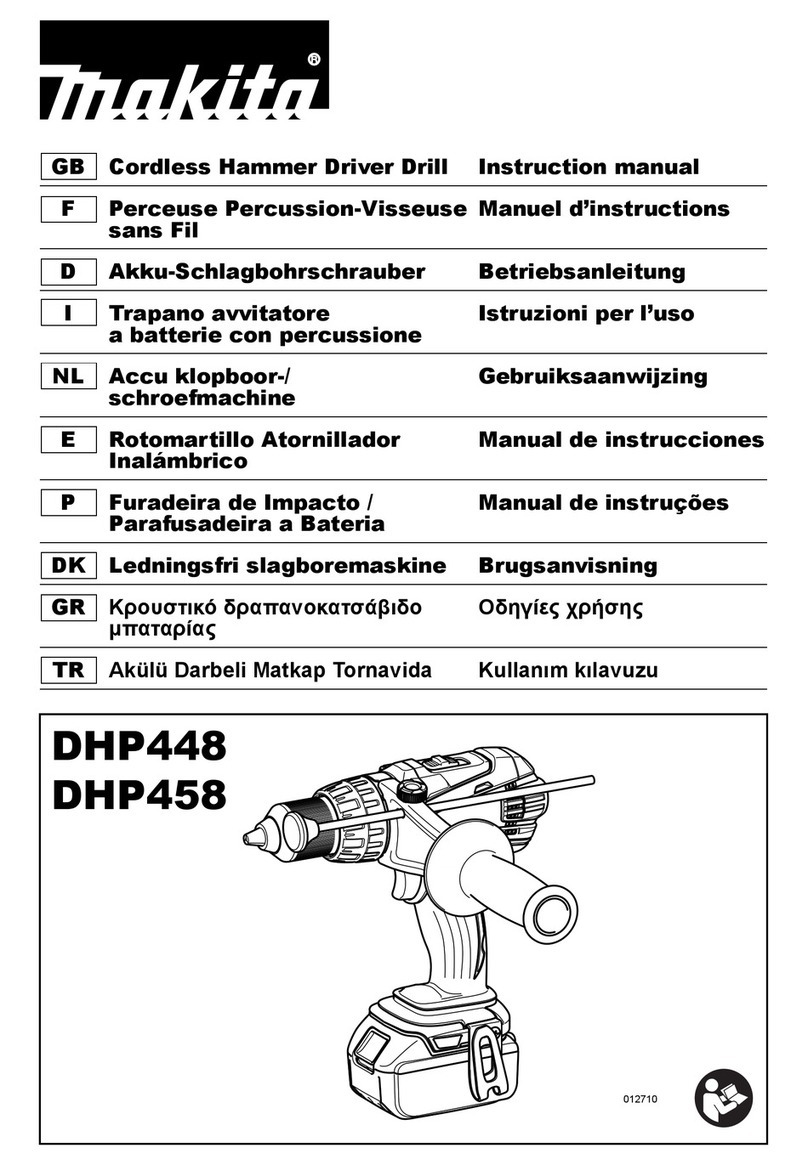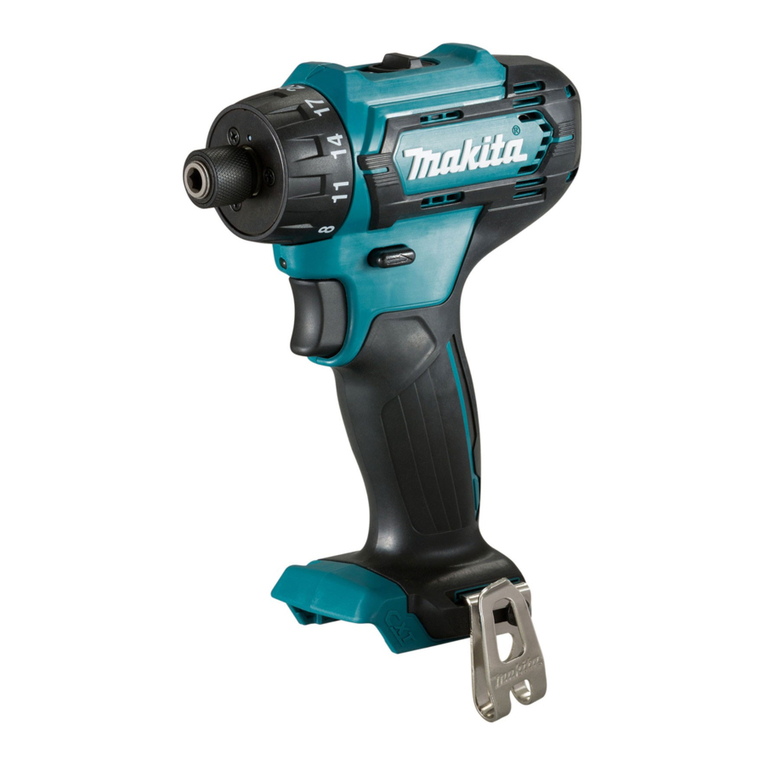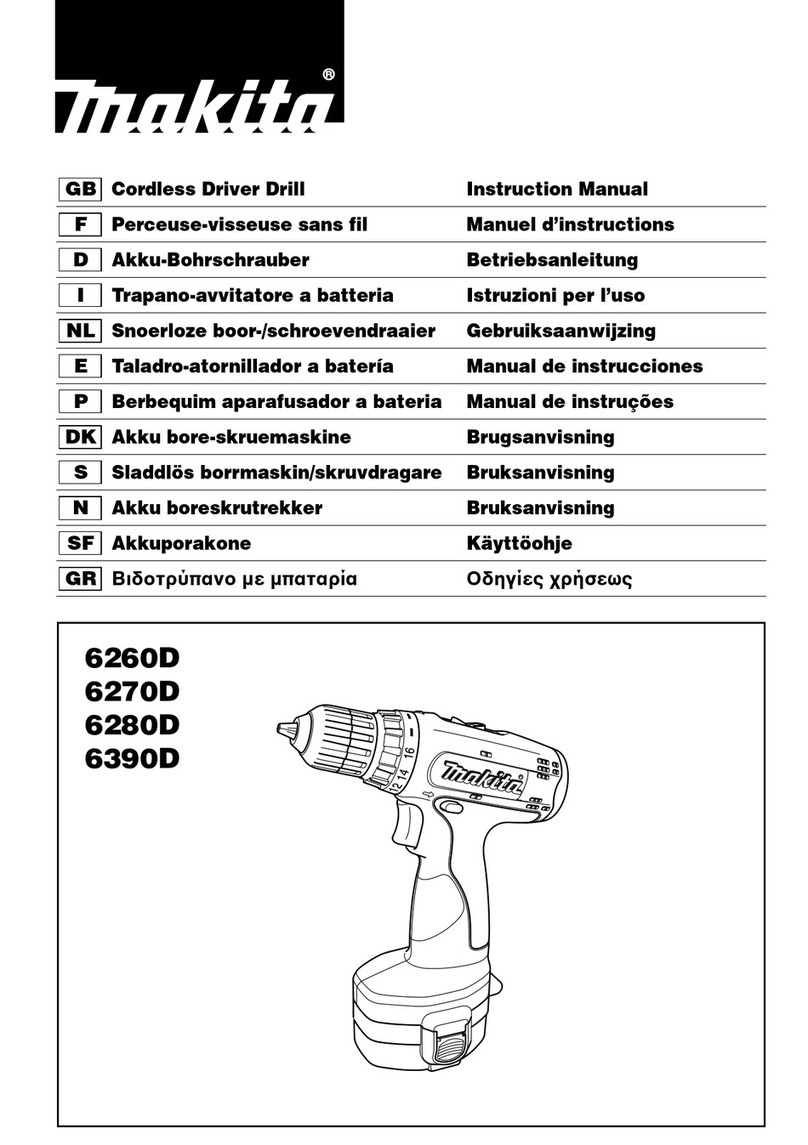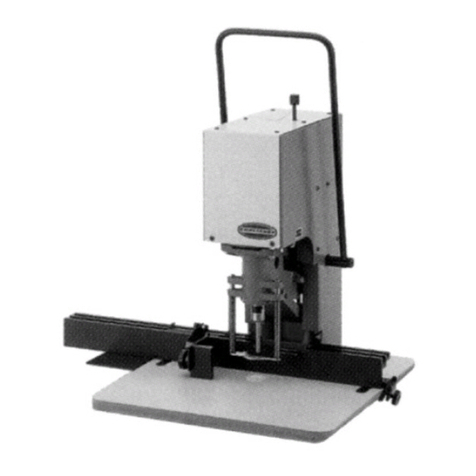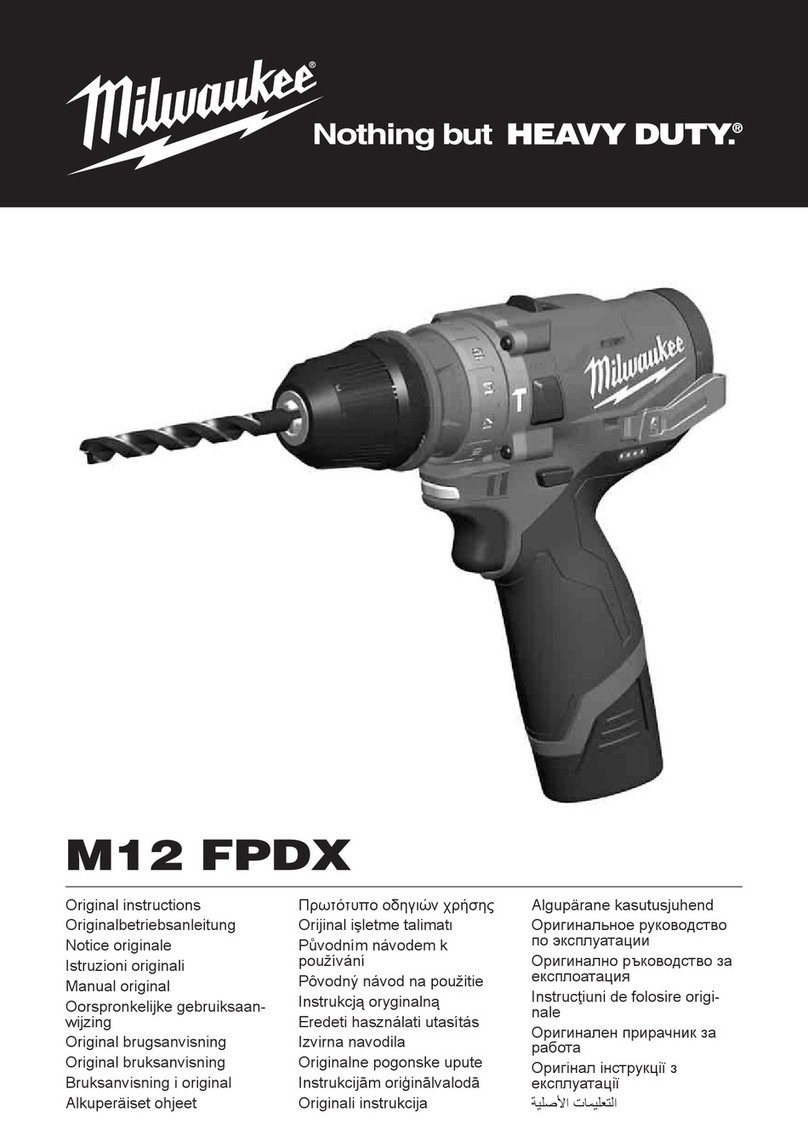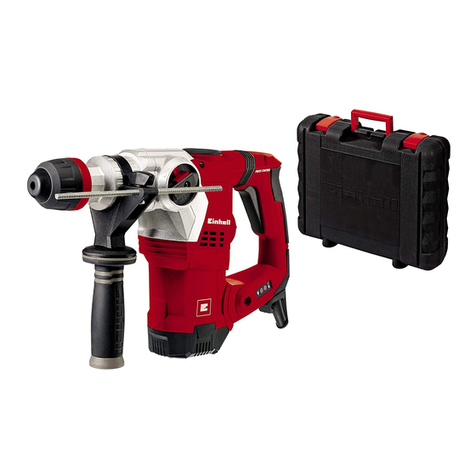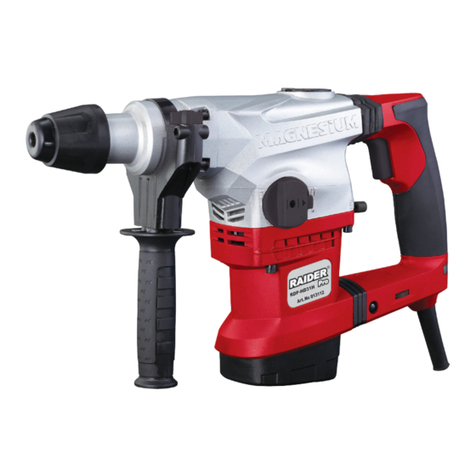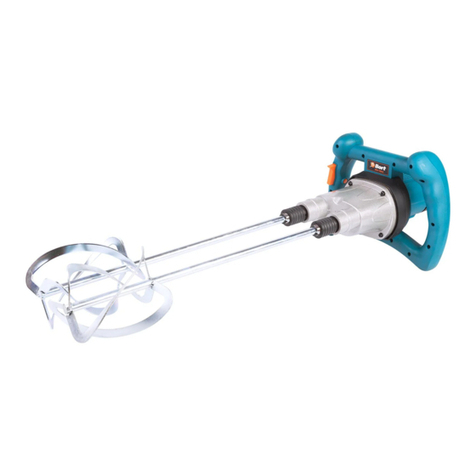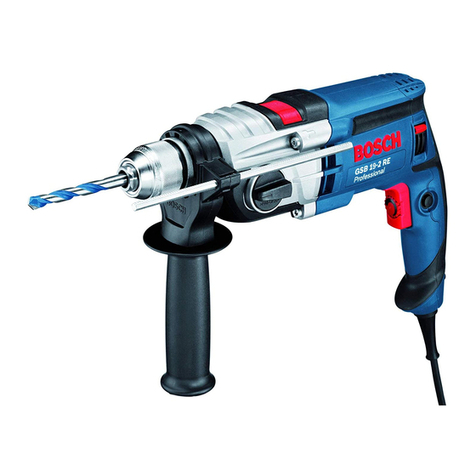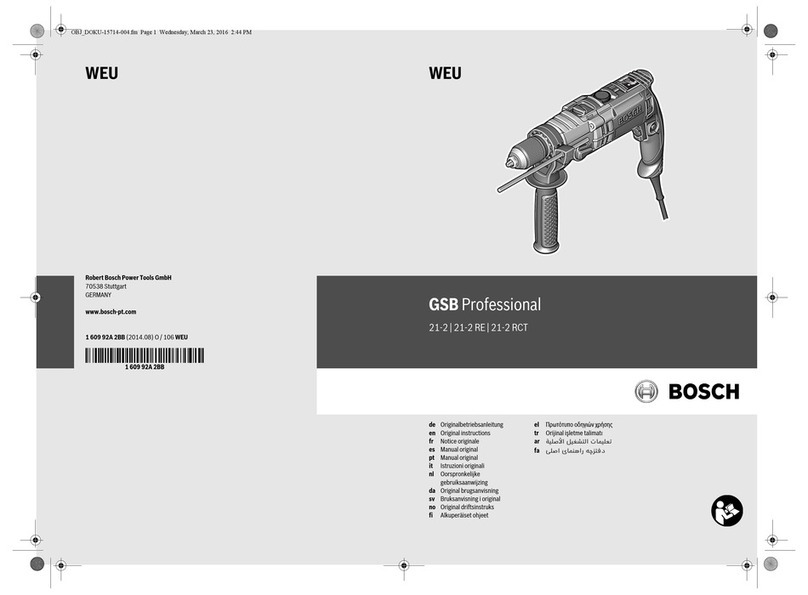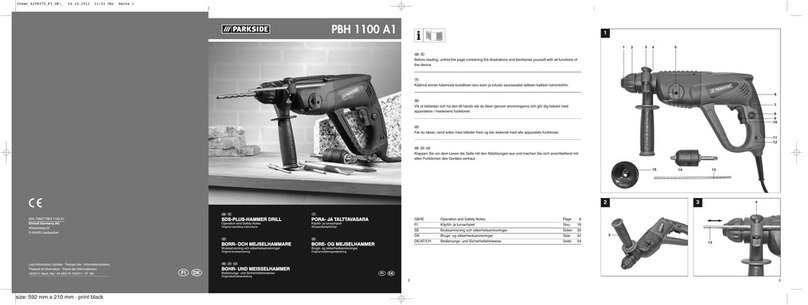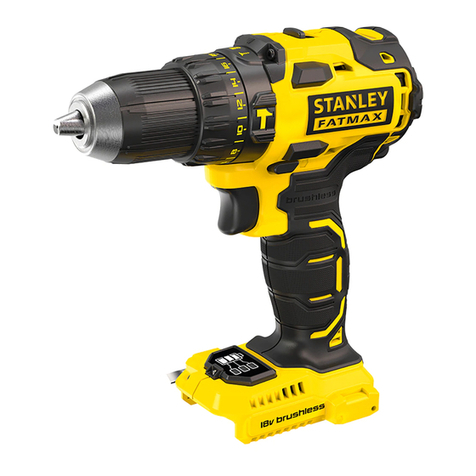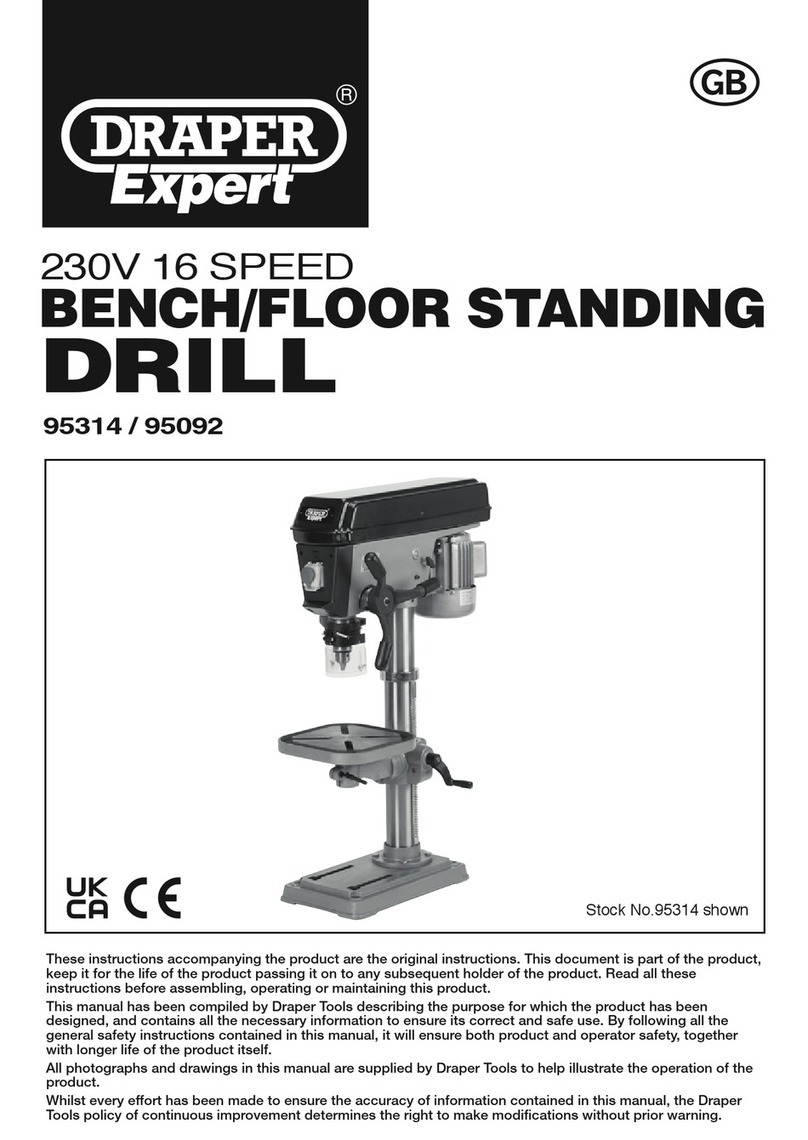5
6. Do not incinerate the battery cartridge even if it
is severely damaged or is completely worn out.
The battery cartridge can explode in a fire.
7. Be careful not to drop, shake or strike battery.
8. Do not charge inside a box or container of any
kind. The battery must be placed in a well venti-
lated area during charging.
ADDITIONAL SAFETY RULES FOR TOOL
ENB023-1
1. Be aware that this tool is always in an operating
condition, because it does not have to be
plugged into an electrical outlet.
2. Hold tool by insulated gripping surfaces when
performing an operation where the cutting tool
may contact hidden wiring. Contact with a “live”
wire will make exposed metal parts of the tool
“live” and shock the operator.
3. Always be sure you have a firm footing. Be sure
no one is below when using the tool in high loca-
tions.
4. Hold the tool firmly.
5. Keep hands away from rotating parts.
6. Do not leave the tool running. Operate the tool
only when hand-held.
7. Do not touch the bit or the workpiece immedi-
ately after operation; they may be extremely hot
and could burn your skin.
SAVE THESE INSTRUCTIONS.
OPERATING INSTRUCTIONS
Installing or removing battery cartridge (Fig. 1)
• Always switch off the tool before insertion or removal of
the battery cartridge.
• To remove the battery cartridge, withdraw it from the
tool while sliding the button on the side of the cartridge.
• To insert the battery cartridge, align the tongue on the
battery cartridge with the groove in the housing and slip
it into place. Always insert it all the way until it locks in
place with a little click. If you can see the red part on
the upper side of the button, it is not locked completely.
Insert it fully until the red part cannot be seen. If not, it
may accidentally fall out of the tool, causing injury to
you or someone around you.
• Do not use force when inserting the battery cartridge. If
the cartridge does not slide in easily, it is not being
inserted correctly.
Side grip (auxiliary handle) (Fig. 2)
Always use the side grip to ensure operating safety.
Install the side grip so that the teeth on the grip fit in
between the protrusions on the tool barrel. Then tighten
the grip by turning clockwise at the desired position. It
may be swung 360° so as to be secured at any position.
Adjustable depth rod (Fig. 3)
The adjustable depth rod is used to drill holes of uniform
depth. Loosen the thumb screw, set to desired position,
then tighten the thumb screw.
Installing or removing driver bit or drill bit
(Fig. 4 & 5)
Important:
Always be sure that the tool is switched off and the bat-
tery cartridge is removed before installing or removing
the bit.
Turn the sleeve counterclockwise to open the chuck jaws.
Place the bit in the chuck as far as it will go. Turn the
sleeve clockwise to tighten the chuck. To remove the bit,
turn the sleeve counterclockwise.
When not using the driver bit, keep it in the bit holders.
Bits up to 45 mm long can be kept there.
Switch action (Fig. 6)
CAUTION:
Before inserting the battery cartridge into the tool, always
check to see that the switch trigger actuates properly and
returns to the “OFF” position when released.
To start the tool, simply pull the trigger. Tool speed is
increased by increasing pressure on the trigger. Release
the trigger to stop.
Reversing switch action (Fig. 7)
CAUTION:
• Always check the direction of rotation before operation.
• Use the reversing switch only after the tool comes to a
complete stop. Changing the direction of rotation
before the tool stops may damage the tool.
• When not operating the tool, always set the reversing
switch lever to the neutral position.
This tool has a reversing switch to change the direction of
rotation. Depress the reversing switch lever from the A
side for forward rotation or from the B side for reverse
rotation. When the switch lever is in between (the neutral
position), the switch trigger cannot be pulled.
Speed change (Fig. 8)
To change the speed, first switch off the tool and then
slide the speed change lever to the “II” side for high
speed or “I” side for low speed. Be sure that the speed
change lever is set to the correct position before opera-
tion. Use the right speed for your job.
CAUTION:
• Always set the speed change lever fully to the correct
position. If you operate the tool with the speed change
lever positioned half-way between the “I” side and “II”
side, the tool may be damaged.
• Do not use the speed change lever while the tool is run-
ning. The tool may be damaged.
Selecting the action mode (Fig. 9)
This tool employs an action mode changing ring. Select
one of the three modes suitable for your work needs by
using this ring. For rotation only, turn the ring so that the
arrow on the tool body points toward the Mmark on the
ring. For rotation with hammering, turn the ring so that
the arrow points toward the Xon the ring. For screw-
driving (rotation with clutch), turn the ring so that the
arrow points toward the Umark on the ring.
CAUTION:
Always set the ring correctly to your desired mode mark.
If you operate the tool with the ring positioned half-way
between the mode marks, the tool may be damaged.
